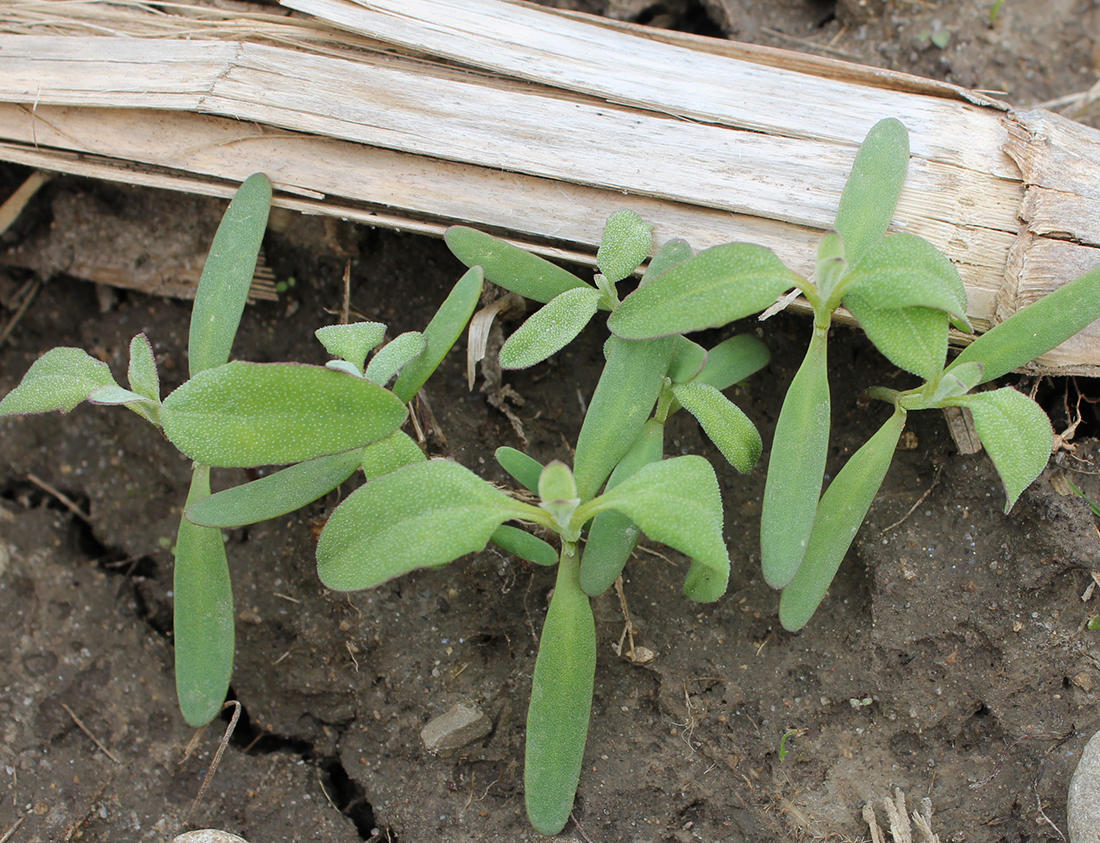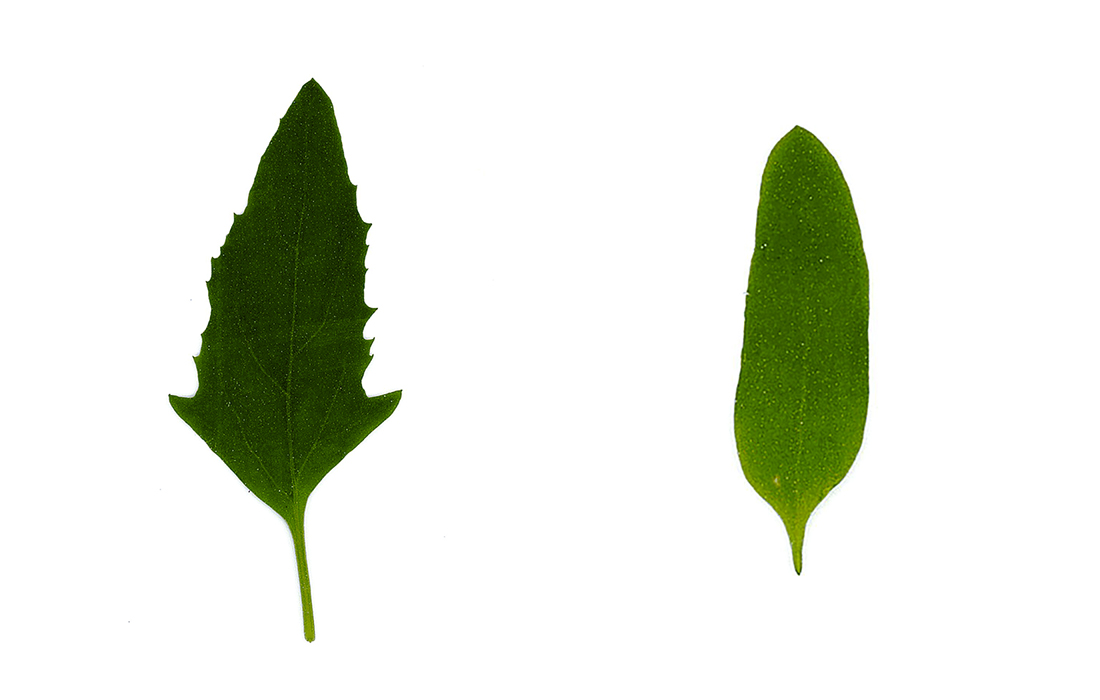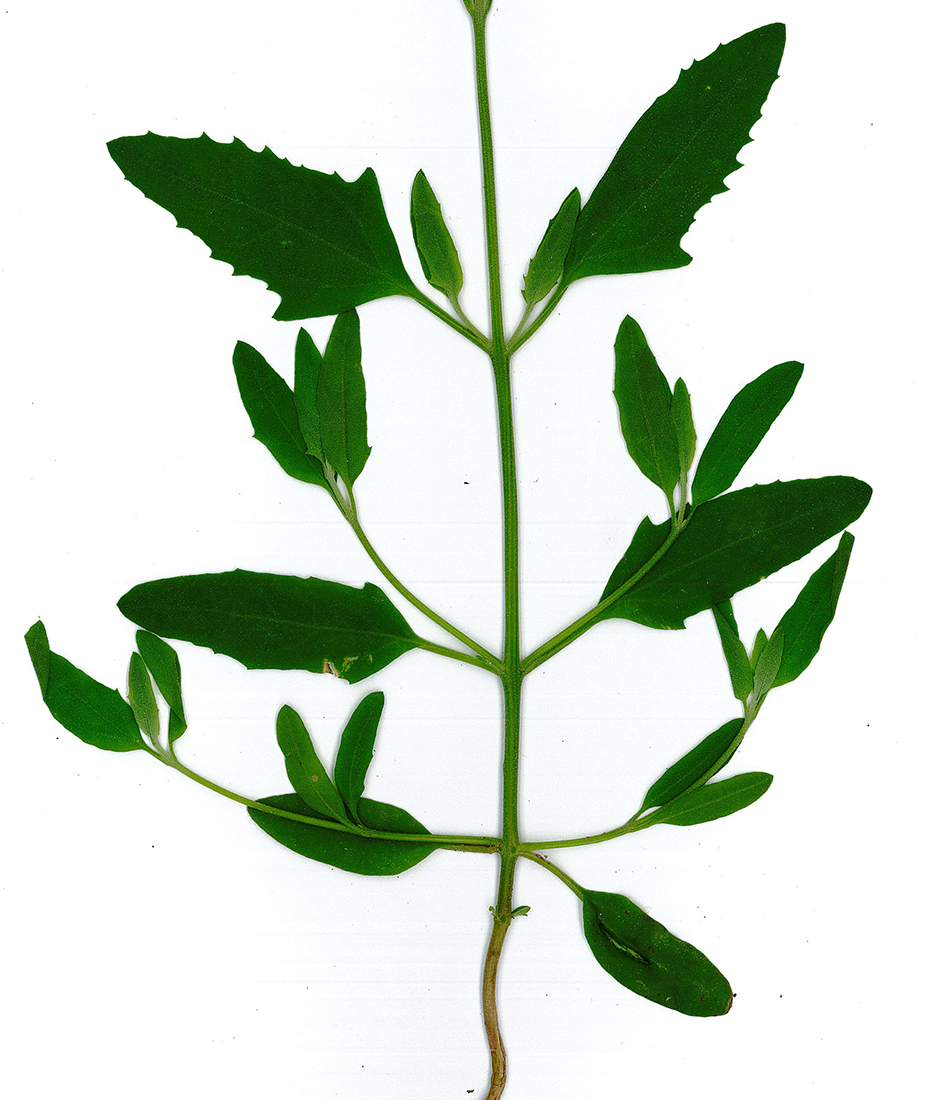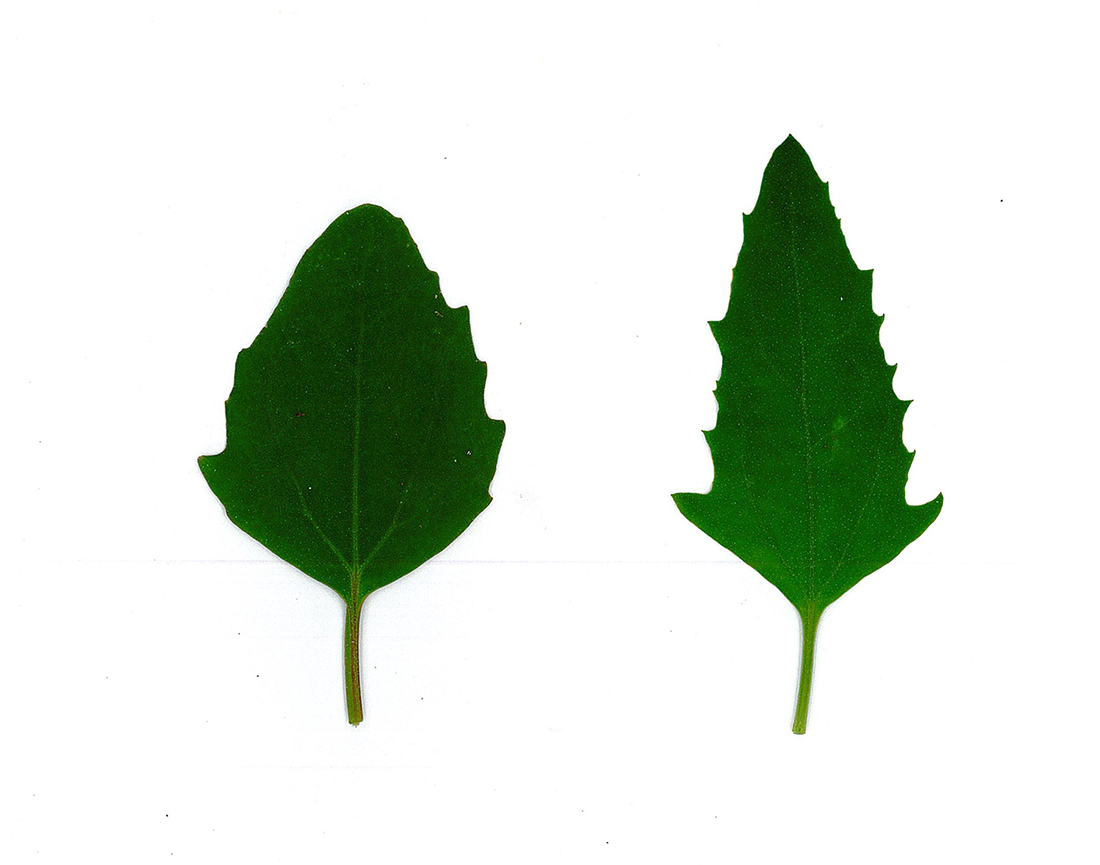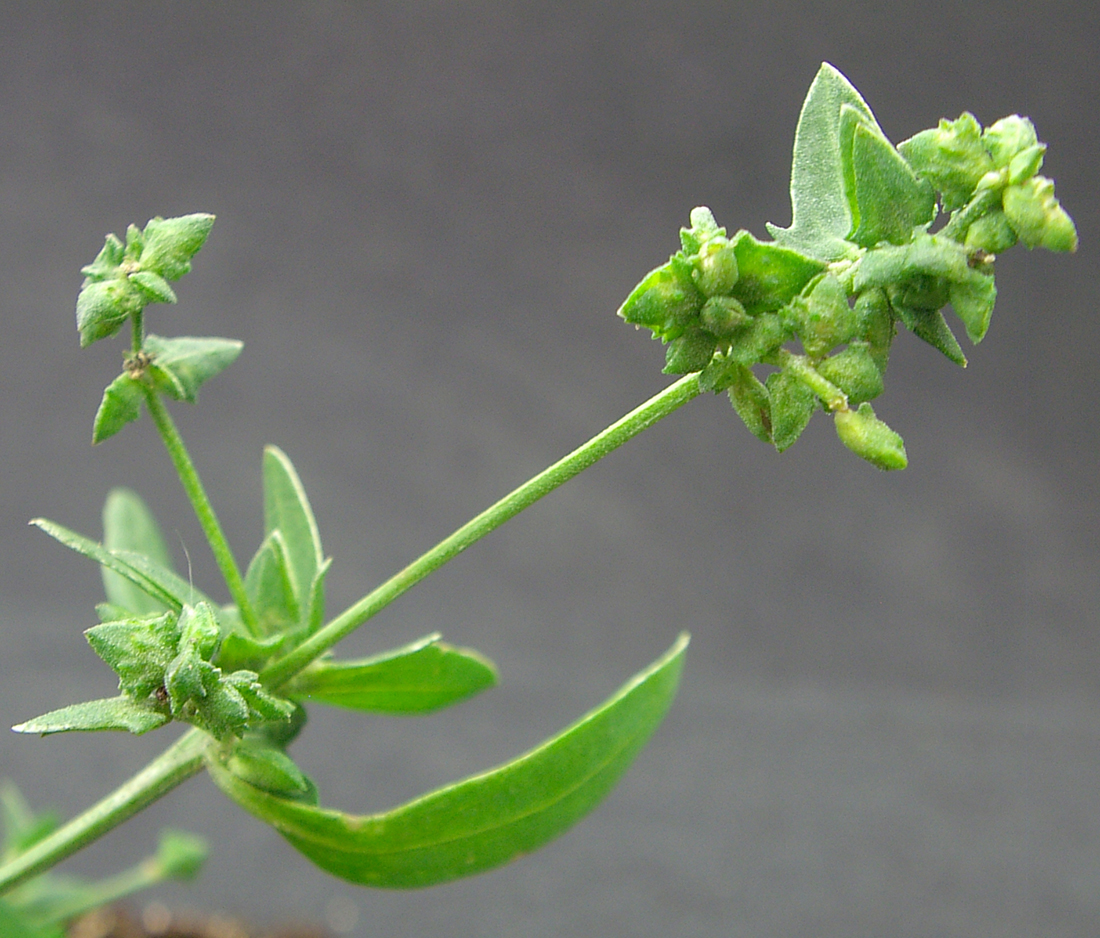Spreading Atriplex
- Goosefoot (Chenopodiaceae family):
- Atriplex patula L.
- EPPO code:
- ATXPA
- Other names:
- Halberdleaf orach, , spear saltbush
Species information
- Lifecycle:
- Annual.
- Propagation:
- Reproduces by seed , has separate male and female plants (dioecious).
- Emergence:
- Emerges in the spring and is one of the first summer annual weeds to emerge, often before lamb’s-quarters.
- Habitat:
- In cultivated fields it is most often found on heavier textured soils but will exist on many soil types.
- Competitiveness:
- No published data exists on crop yield losses but presumably similar to its very competitive cousin, lamb’s-quarters.
- Resistance:
- No confirmed cases of resistant populations.
Identification clues
Leaves
- Cotyledons:
- Linear with a very short petiole and a rounded tip.
- Young leaves:
- Oval-lanceolate, often egg-shaped and lightly coated with white, mealy powder.
- Mature leaves:
- Irregular toothed margin, green with two prominent basal lobes, the base distinctly triangular. Lightly covered in white mealy powder.
Mature plant
- Stem:
- Stems are wiry and smooth. Opposite leaf orientation (2 per node) on the stem.
- Flowers and seed heads:
- Very small inconspicuous flowers in dense green clusters. Female plants produce irregularly shaped seed pods enclosed by diamond shaped bracts.
- Roots:
- Taproot.
Often mistaken for
I know it's not Lamb's-quarters because Spreading atriplex has much narrower leaves with two prominent sharp basal lobes compared to lamb’s-quarters much broader triangular shaped leaf. Spreading atriplex also has a wiry stem with opposite leaf orientation compared to the much more branched lamb’s-quarters with its alternate leaf orientation.
I know it's not Fig-leaved goosefoot because Fig-leaved goosefoot leaves look very similar as they too have the prominent basal lobes. However, the leaf shape above those basal lobes is rectangular but with a round apex. With spreading atriplex, the leaf blade above the basal lobes is triangular with a pointed apex. In addition, the basal lobes of fig-leaved goosefoot are rounded while those of atriplex are pointy.
